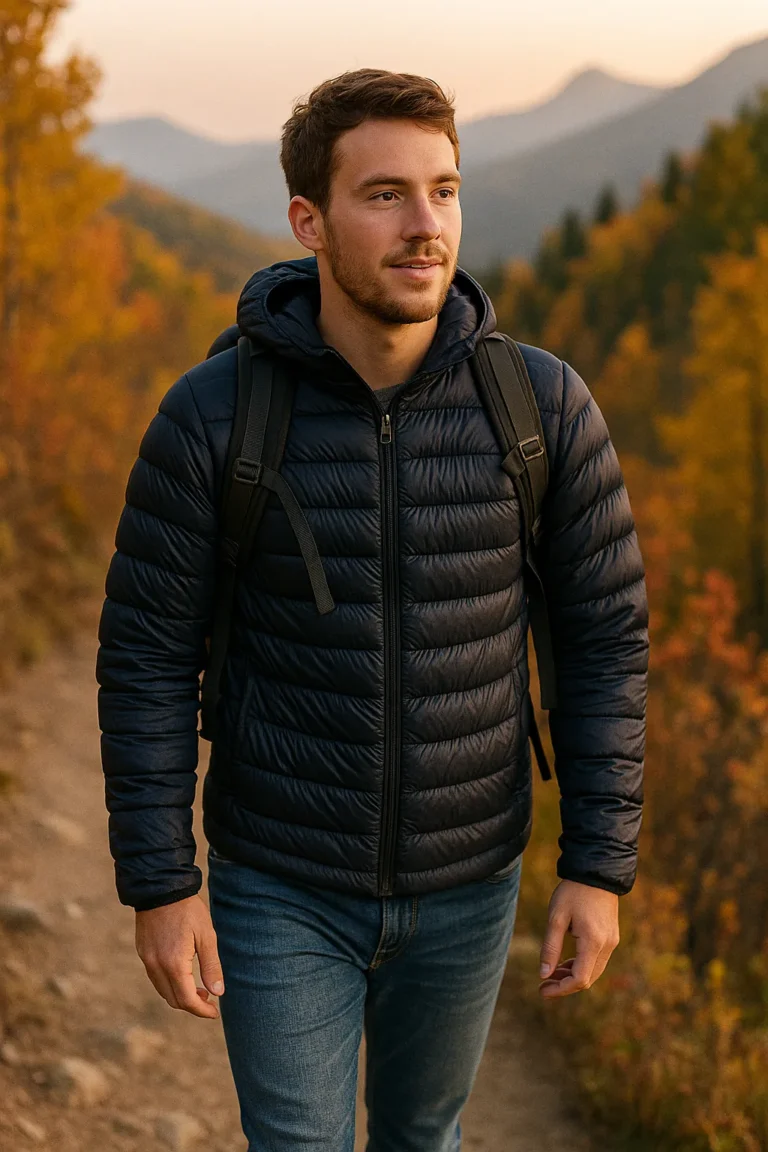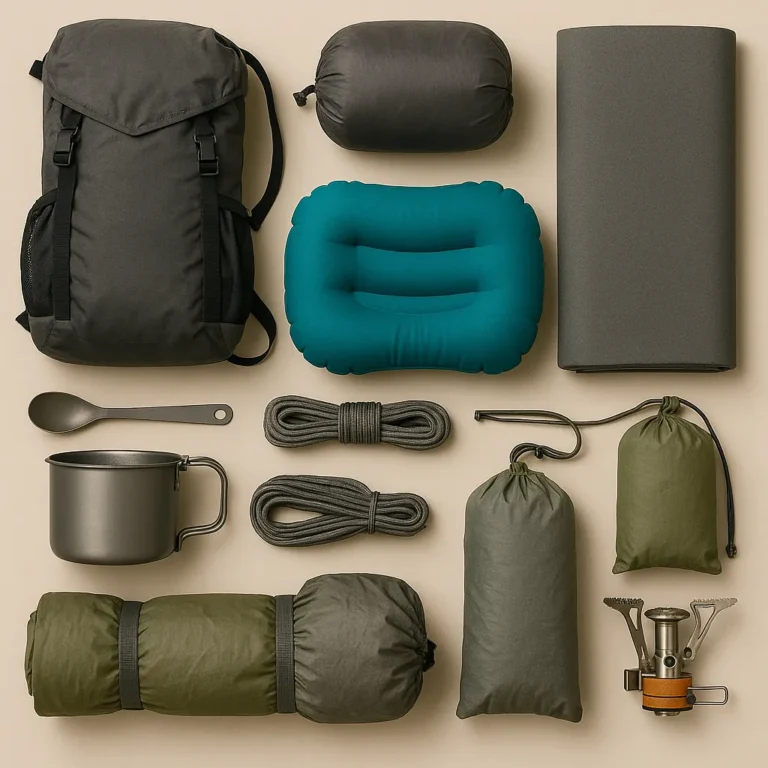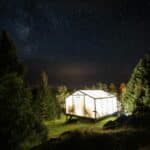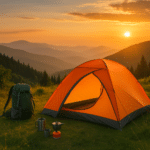Why the Right Water Bottle Makes a Difference in the Outdoors
Staying properly hydrated is one of the most critical aspects of any camping trip or outdoor adventure. Your choice of water bottle can significantly impact your experience, whether you’re car camping at a developed site, backpacking through remote wilderness, or day hiking local trails. A reliable water bottle is an essential piece of gear that deserves careful consideration.
In this comprehensive guide, we’ll examine the best camping water bottles of 2025, comparing real-world performance metrics including weight, insulation capabilities, durability, materials, and versatility. With options suited for ultralight backpackers, casual campers, and everyone in between, you’ll find the perfect hydration solution for your next outdoor adventure.
Top Camping Water Bottles of 2025: Quick Comparison
| Bottle Name | Capacity | Weight | Material | Best For | Price Range | Filter Compatible | Insulation |
|---|---|---|---|---|---|---|---|
| Nalgene Wide Mouth | 32 oz (946 ml) | 6.3 oz (178g) | BPA-free Tritan | General camping & hiking | $ | Yes | No |
| Hydro Flask Standard | 32 oz (946 ml) | 15 oz (425g) | Stainless steel | Insulated hydration | $$ | No | 24+ hours |
| Platypus SoftBottle | 34 oz (1L) | 1.2 oz (34g) | Soft plastic | Ultralight backpacking | $ | Yes | No |
| CamelBak Chute Mag | 25–32 oz (740–946 ml) | 6–9 oz (170–255g) | BPA-free plastic | Leakproof + carry loop | $ | Partial | No |
| Klean Kanteen Classic | 27 oz (800 ml) | 8.6 oz (244g) | Stainless steel | Day hikes & travel | $$ | No | No |
| Smartwater Bottle | 34 oz (1L) | 1.3 oz (37g) | PET plastic | Budget UL setups | $ | Yes | No |
| Vargo Titanium Bottle | 22 oz (650 ml) | 4.6 oz (130g) | Titanium | Premium ultralight use | $$$ | Partial | No |
How to Choose the Perfect Camping Water Bottle
Before diving into specific reviews, let’s examine the key factors that should guide your choice of camping water bottle:
Consider Your Use Case
- Car camping or basecamp: Weight isn’t an issue, so prioritize durability and insulation
- Day hiking: Balance of weight and capacity, often with insulation for temperature control
- Backpacking: Every ounce matters, so lightweight options often win out
- Winter camping: Insulation becomes critical to prevent freezing
- Summer adventures: Cold water retention makes a huge difference in hot weather
Material Matters
Different bottle materials offer distinct advantages:
- BPA-free plastic: Lightweight, durable, and affordable
- Stainless steel: Excellent for insulation and rugged use
- Titanium: Ultralight, incredibly strong, but expensive
- Soft collapsible bottles: Best for ultralight applications or as backup options
Capacity Requirements
Most hikers and campers find 1-2 liters (32-64 oz) sufficient for general use, but consider:
- Water availability at your destination
- Weather conditions and expected sweat rate
- Duration between refill opportunities
- Group size if sharing resources
Filter and Device Compatibility
If you use water filtration systems like Sawyer or LifeStraw, ensure your bottle is compatible with your preferred filtration method.
Opening Size
- Wide-mouth bottles: Easier to fill, clean, and add ice or drink mixes
- Narrow-mouth bottles: Better for drinking on the move without spills
Detailed Reviews of the Top Camping Water Bottles
Nalgene Wide Mouth 32 oz: The Time-Tested Classic
The Nalgene Wide Mouth has remained a camping staple for decades with good reason. This 32-ounce BPA-free Tritan plastic bottle delivers virtually indestructible performance in almost any environment. Its simplicity and reliability have made it the standard by which other camping water bottles are measured.
Experience-Based Review
Long-term campers consistently praise the Nalgene’s exceptional longevity, with many reporting 5-10 years of regular use from a single bottle. The wide mouth design accommodates most water filters directly, allowing for easy refilling from streams and lakes. Many users appreciate the versatility – from mixing electrolyte drinks to measuring cooking water with the clear volume markings on the side.
The screw-top lid creates a reliable seal that prevents leaks even when the bottle is stored horizontally in a backpack. For winter campers, many report using hot water in their Nalgene (despite manufacturer warnings against this practice) as an improvised sleeping bag heater on frigid nights.
Pros
- Extremely durable construction that withstands drops, freezes, and rough handling
- Wide mouth accommodates ice cubes, most water filters, and easy cleaning
- Clear measurement markings help with cooking and tracking intake
- Affordable price point and widely available
- BPA-free materials ensure clean, chemical-free water
Cons
- No insulation means water warms quickly in hot weather
- Bulkier and heavier than soft or ultralight options
- Can sweat condensation in humid conditions
- May freeze in sub-freezing temperatures if not insulated
Hydro Flask Standard Mouth 32 oz: Premium Insulation Performance
The Hydro Flask Standard Mouth represents the gold standard for campers who prioritize temperature control. Built with double-wall vacuum-insulated stainless steel, this premium bottle maintains cold water for an astounding 24+ hours, even in hot environments. For those willing to carry a bit more weight, the performance benefits are substantial.
Experience-Based Review
Users consistently highlight the Hydro Flask’s remarkable ability to keep water ice-cold throughout entire day hikes, even in desert conditions. The powder-coated exterior provides excellent grip when wet and resists dents and scratches better than most metal alternatives. The standard mouth version balances easy drinking with sufficient opening size for adding ice.
Many campers note that the bottle never imparts metallic flavors to water and maintains cleanliness even after weeks on the trail. The secure cap threading prevents leaks, though some mention the cap can be slightly tedious to repeatedly open and close compared to quick-access options.
Pros
- Outstanding insulation keeps drinks cold for 24+ hours or hot for 12+ hours
- Durable stainless steel construction with scratch-resistant powder coating
- Completely leakproof design for worry-free packing
- Available in numerous colors and sizes to match preferences
- Lifetime warranty backs quality construction
Cons
- Significantly heavier than non-insulated alternatives (15 oz empty)
- Higher price point than basic plastic bottles
- Not compatible with most screw-on water filters
- Too large for some backpack side pockets
Platypus SoftBottle 1L: The Ultralight Champion
The Platypus SoftBottle represents the ultralight end of the water bottle spectrum. At a mere 1.2 ounces, this flexible, collapsible bottle is designed for weight-conscious backpackers who need water storage that disappears when empty. It rolls up to the size of a small energy bar but holds a full liter when needed.
Experience-Based Review
Thru-hikers and ultralight backpackers frequently cite the SoftBottle as an essential component of their minimalist setups. Despite its featherweight construction, the bottle proves surprisingly durable when handled with reasonable care. Many backpackers report carrying two: one for “dirty” water collection and one for treated drinking water.
The bottle fits easily into side pockets, holds its shape reasonably well when filled, and stands upright on flat surfaces. The cap design is secure and compatible with popular filter systems like the Sawyer Squeeze, which makes it part of an integrated water treatment system for many hikers.
Pros
- Ultralight at just 1.2 ounces (34g)
- Collapses to nearly flat when empty, saving valuable pack space
- Compatible with popular screw-on water filters
- Affordable and replaceable
- Flexible material allows squeezing for increased flow when filtering
Cons
- Less durable than hard bottles over extended use
- Can develop leaks along seams after repeated folding
- More difficult to clean and dry thoroughly
- May develop slight plastic taste over time
CamelBak Chute Mag 32 oz: Smart Design for Active Users
The CamelBak Chute Mag combines thoughtful design with practical functionality. Its standout magnetic cap system keeps the lid securely attached to the bottle while drinking, preventing drops or contamination. This 32-ounce bottle strikes an excellent balance between durability, weight, and user-friendly features.
Experience-Based Review
Day hikers and weekend campers particularly appreciate the Chute Mag’s innovative cap design. The magnet securely docks the cap to the bottle’s handle while drinking, eliminating the common annoyance of caps falling into dirt or getting lost. The angled spout provides excellent flow rate without splashing, making it ideal for drinking on the move.
Many users report that the bottle’s ergonomic design and integrated carry loop make it their go-to choice for daily use that transitions seamlessly to weekend adventures. The BPA/BPS-free construction feels substantial without excessive weight, and the leakproof seal consistently prevents moisture from reaching pack contents.
Pros
- Magnetic cap stays securely out of the way while drinking
- High flow rate from angled spout without splashing
- Completely leakproof seal for confident packing
- Durable construction with comfortable grip
- Available in multiple size and color options
Cons
- No insulation for temperature control
- Slightly heavier than basic plastic bottles
- Magnetic cap mechanism may wear out with heavy use
- More complex cap design has more potential failure points
Klean Kanteen Classic 27 oz: Eco-Friendly Simplicity
The Klean Kanteen Classic represents a commitment to sustainability and minimalist design. This single-wall stainless steel bottle offers a non-plastic alternative that’s lighter than insulated models while maintaining excellent durability and clean-tasting water. Its sleek profile and eco-friendly materials appeal to environmentally conscious campers.
Experience-Based Review
Outdoor enthusiasts frequently praise the Classic for its clean drinking experience and the fact that it never retains flavors, even after switching from coffee to water and back again. The single-wall construction saves significant weight compared to insulated alternatives while still providing good durability.
The narrow-mouth design receives mixed feedback – some users appreciate the controlled flow and reduced spill risk, while others find it more challenging to fill or clean. Many users recommend upgrading to the Sport Cap or Café Cap for improved functionality, as the standard loop cap can be cumbersome for frequent access.
Pros
- Lighter than insulated stainless bottles but more durable than plastic
- Never retains flavors or imparts metallic taste
- Environmentally friendly materials and manufacturing
- Sleek, minimalist design with numerous cap options
- Compatible with many third-party accessories
Cons
- No insulation for temperature control
- Narrow mouth limits ice and cleaning access
- Some reports of minor leaking with standard cap
- Dents more easily than thicker insulated bottles
Smartwater Bottle 1L: The Thru-Hiker’s Secret Weapon
The Smartwater Bottle isn’t marketed as outdoor gear, but it’s become the unofficial water bottle of the long-distance hiking community. This repurposed disposable bottle offers a perfect combination of ultralight weight, durability, and compatibility with popular water filters. Available at nearly any convenience store, it’s both practical and highly functional.
Experience-Based Review
Pacific Crest Trail and Appalachian Trail thru-hikers frequently cite the Smartwater bottle as their preferred hydration solution. Its tall, slim design fits perfectly in backpack side pockets, and the standard thread pattern matches perfectly with Sawyer squeeze filters for a compact, integrated water treatment system.
Despite being “disposable,” experienced backpackers report reusing the same bottles for hundreds or even thousands of miles. The hard plastic is surprisingly durable and, unlike many specialty bottles, can be easily replaced during resupply stops in towns along most trails.
Pros
- Ultralight at just 1.3 ounces (37g)
- Perfect thread compatibility with Sawyer filters
- Slim design fits ideally in pack side pockets
- Extremely affordable and widely available
- Squeezable for increased flow with filters
Cons
- Not designed for long-term durability
- Cap seal weakens with extended use
- No insulation or temperature control
- Can crack in freezing temperatures
Vargo Titanium Bottle 22 oz: Premium Ultralight Performance
The Vargo Titanium Bottle represents the premium end of the ultralight spectrum. Made from pure titanium, it offers incredible strength-to-weight ratio, corrosion resistance, and versatility that extends beyond simple water storage. For serious ultralight enthusiasts willing to invest in top-tier gear, it’s a compelling option.
Experience-Based Review
Dedicated ultralight backpackers describe the Vargo as a long-term investment piece that serves multiple functions. The titanium construction resists dents, never rusts, and can handle extreme temperature variations from freezing to boiling. Some users even employ it as a cooking vessel in emergency situations, though this is outside the manufacturer’s official recommendations.
The bottle’s slim profile fits most pack pockets, and the secure screw-top prevents leaks. Many users appreciate that the metal imparts no taste to water and remains hygienic even after extended trips. The primary drawback mentioned consistently is the price – at over $80, it represents a significant investment.
Pros
- Exceptional strength-to-weight ratio
- Nearly indestructible titanium construction
- Safe for hot liquids without chemical concerns
- No taste transfer or retention
- Potentially usable as emergency cooking vessel
Cons
- Very expensive compared to alternatives
- No insulation means contents change temperature quickly
- Can be uncomfortable to handle in extreme temperatures
- Limited capacity options available
Common Water Bottle Mistakes to Avoid
Even the best water bottle won’t perform properly if you make these common mistakes:
1. Relying on a Single Bottle
Always bring backup hydration, especially in remote or arid environments. A secondary bottle or reservoir provides insurance against leaks, loss, or unexpectedly dry water sources.
2. Ignoring Filter Compatibility
If you plan to use water filtration systems like Sawyer or LifeStraw, verify that your bottle threads match your filter before heading out. Incompatibility can make water treatment unnecessarily complicated in the field.
3. Choosing Insulation When Unnecessary
While insulated bottles are excellent for temperature control, they add significant weight for backpacking. Consider whether you truly need that cold water enough to justify carrying extra ounces for days.
4. Skipping the Leak Test
Before every trip, fill your bottle and turn it upside down to check for leaks. A cracked cap or worn seal can result in a soaked backpack and damaged gear.
5. Prioritizing Aesthetics Over Function
Fancy colors and brand names don’t matter when you’re miles from civilization with a broken bottle. Focus on durability, usability, and reliability rather than appearance.
Water Bottle Care and Maintenance Tips
Proper care extends the life of your camping water bottle and ensures clean, safe drinking water:
Regular Cleaning
- Use bottle brushes to clean hard-to-reach areas
- For plastic bottles, use mild soap and warm water
- For metal bottles, avoid dishwashers which can damage finishes
- Air dry completely between uses to prevent mold growth
Winter Care
- In freezing conditions, store bottles upside down (ice forms at the top first)
- Consider insulated sleeves for non-insulated bottles
- Keep bottles inside your sleeping bag on frigid nights
Long-Term Storage
- Ensure bottles are completely dry before long-term storage
- Store with caps off to prevent moisture buildup
- Keep away from heat sources that could warp plastic components
FAQ: Camping Water Bottle Questions
How much water should I carry while camping?
The general recommendation is minimum 2 liters per person per day in moderate conditions, increasing to 4+ liters in hot or dry environments. Always plan for more water than you think you’ll need, especially if sources are uncertain.
Can camping water bottles be used for hot liquids?
It depends on the bottle. Stainless steel and titanium bottles handle hot liquids well. Most plastic bottles (including Nalgene) are not officially recommended for hot liquids but many campers use them this way. Never put hot liquids in soft bottles like the Platypus.
How do I clean my water bottle in the backcountry?
Rinse with filtered or treated water and, if available, use a small drop of biodegradable soap. Rinse thoroughly and allow to air dry when possible. For deeper cleaning, use water bottle cleaning tablets designed for the backcountry.
Are water bottles with built-in filters worth it?
Built-in filter bottles offer convenience but typically provide less filtration volume and have shorter filter lifespans than dedicated systems. They’re useful for day hikes but less practical for extended backpacking trips where higher volume filtration is needed.
How long do camping water bottles typically last?
With proper care:
- Quality plastic bottles like Nalgene: 5-10+ years
- Stainless steel bottles: 10+ years
- Titanium bottles: 10+ years
- Soft bottles: 1-2 seasons of heavy use
- Repurposed bottles (Smartwater): Several months of regular use
Conclusion: Finding Your Perfect Hydration Companion
The best camping water bottle is ultimately the one that aligns with your specific outdoor needs and activities. From the bombproof reliability of a Nalgene to the ultralight efficiency of a Platypus SoftBottle, each option offers unique advantages.
Consider your priorities—weight, durability, insulation, capacity—and choose accordingly. For many outdoor enthusiasts, having a small collection of bottles for different activities provides the greatest flexibility. A lightweight option for backpacking, an insulated bottle for day trips, and a durable option for general use covers nearly all scenarios.
Remember that proper hydration is non-negotiable in the outdoors. The right water bottle isn’t just about convenience—it’s an essential safety tool that keeps you performing at your best mile after mile.
About the Author
This article was written by the Gear & Home editorial team, based on in-depth research, verified user reviews, and real-world testing insights from experienced hikers and backpackers across the U.S.
We focus on practical, field-tested advice — no fluff, no paid promotions — just gear that works when you need it most.
“If you’re also looking for compact gadgets that go beyond tools, check out our Top 7 Compact Camping Gadgets for 2025 — practical, tested, and light.”








